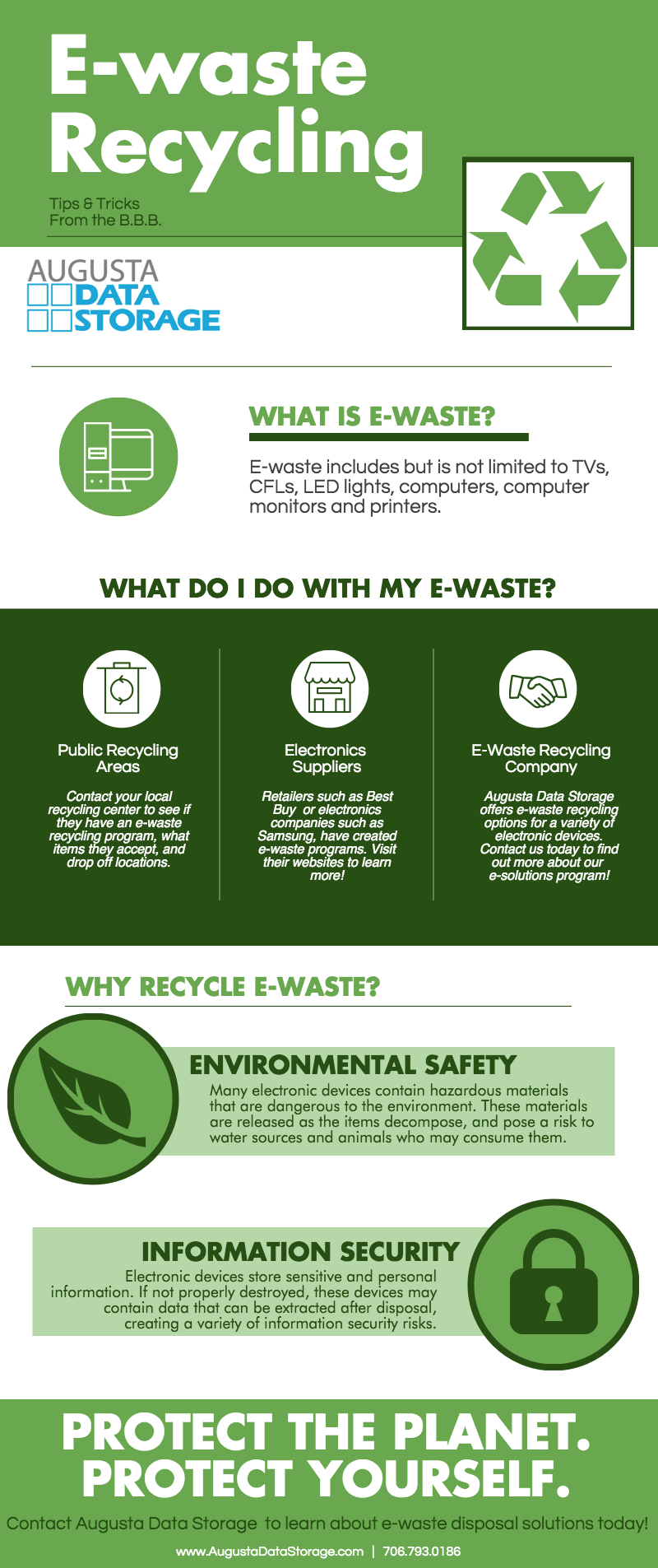E-Waste Disposal – What You Need to Know
Before you can dive into the how and why of e-waste recycling, it’s important to know what items qualify as “e-waste.” In today’s digital age, electronic devices are becoming obsolete faster than in any other time in history, additionally with people pushing for more energy efficient items, or devices with more power, the constant desire for change and improvement is driving the “throw away” rate of electronics through the roof. The only problem is you can’t simply throw away most of your electronic devices. Even the new CFL light bulbs contain hazardous materials that are harmful to the environment if not disposed of properly. Wondering what items in your home might classify as electronic waste? The list includes, but is not limited to:
- TVs
- CFLs
- LED lights
- Computers
- Computer Monitors
- Tablets
- Mobile Devices
- Printers
- Hard Drives
Now that you have an idea of what e-waste actually is, let’s jump into the why. I’m sure you’ve seen it on TV or in the news, but e-waste can be directly connected to hazardous materials that have poisoned water sources, affecting a variety of plant and animal life as it trickles down-stream. In addition to hazardous waste, these bulky items are causing landfill space to overflow at an alarming rate, meaning more space must be dedicated to providing a place for our waste. If environmental effects weren’t enough, think about all the things you store in these devices. Contacts, passwords, financial information, and private documents, or on the other side of the spectrum, client information, payment information, medical records, and other sensitive information stored for your business. Imagine if that got into the wrong hands? The worst part? It can! Even if you delete the items from your devices, some hackers may still be able to remove it. The only way to ensure your information is safe, is to use a secure disposal process.
So, how should you go about disposing of your e-waste? There are a few options, but the most important thing to consider is HOW the items will be disposed of and where they are recycled. Items that are exported and recycled abroad often face much less restrictions on the process, leaving the levels of harmful toxins seeping into the environment at extremely high levels. Keep these products local and find a resource with an e-waste recycling program in place that can either shred or demanufacture the items for re-use.
- Local Recycling centers sometimes have e-waste recycling options. Make sure to call ahead and find out if your local facility has a process in place to handle your e-waste.
- Many Electronics stores and suppliers are working to develop e-waste recycling programs for consumers, to help lessen the environmental and safety risks of end-of-life electronics.
- Local e-waste recycling companies, such as Augusta Data Storage have equipment and processes in place to properly shred and recycle your electronic waste.
Feeling a little overwhelmed? That’s ok! We put together this quick guide to understanding e-waste recycling.

If you are looking for a few more tips or additional information about e-waste and e-waste disposal, check out a few of these links:
The National Center for Electronics Recycling
